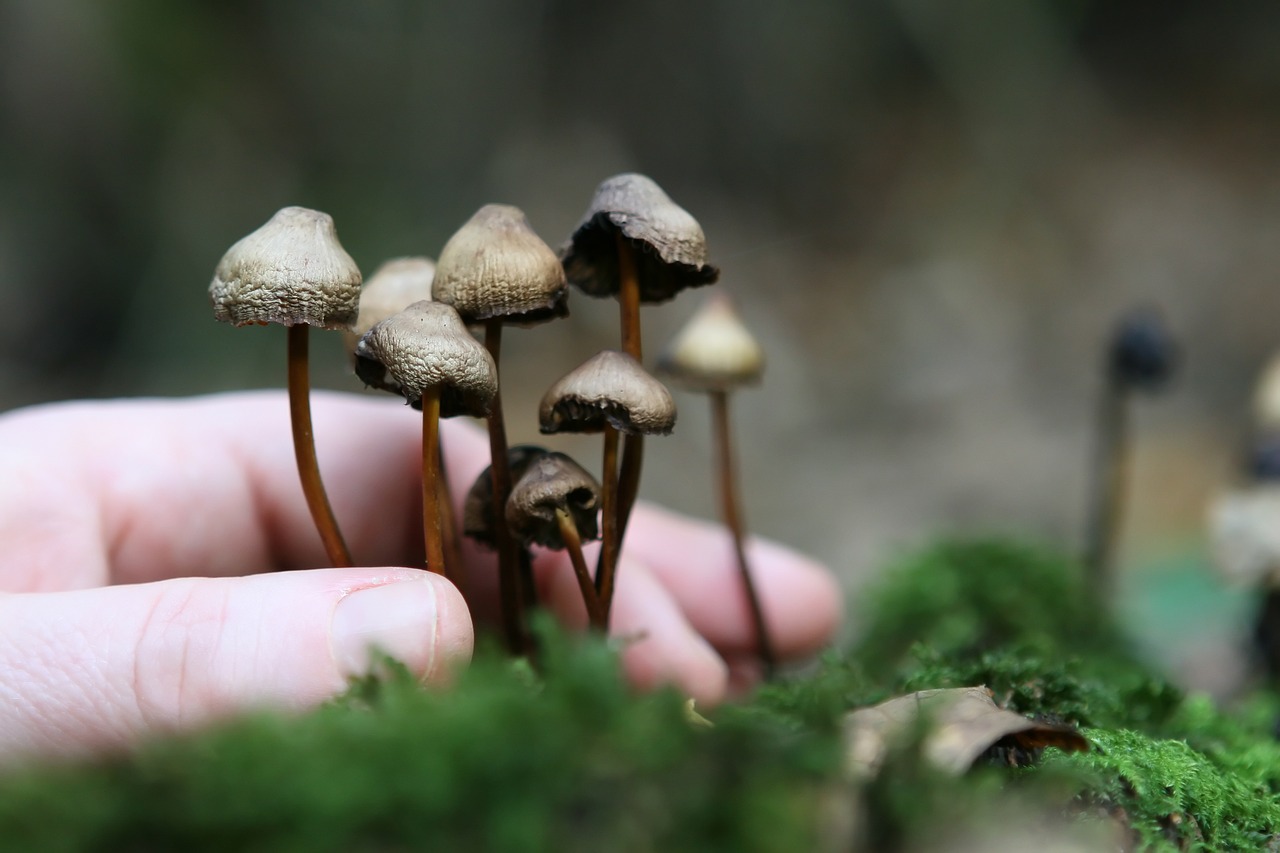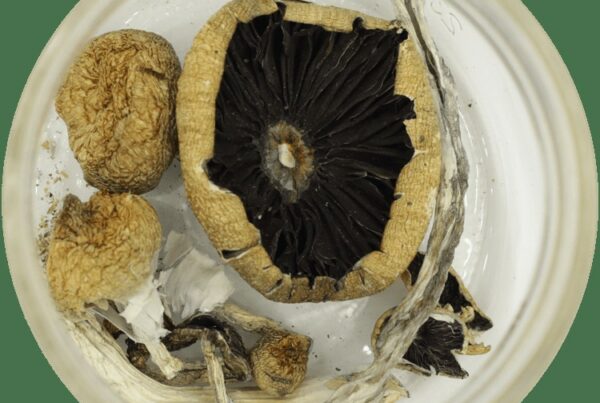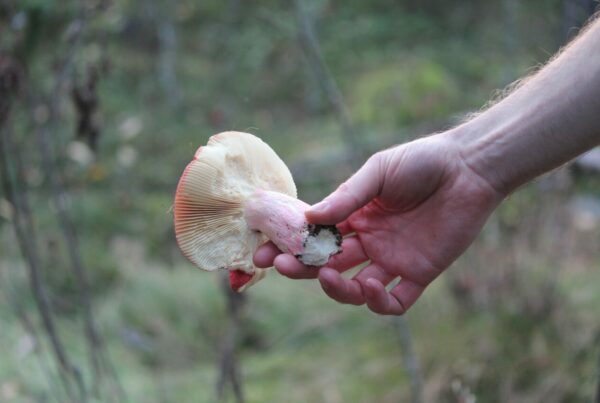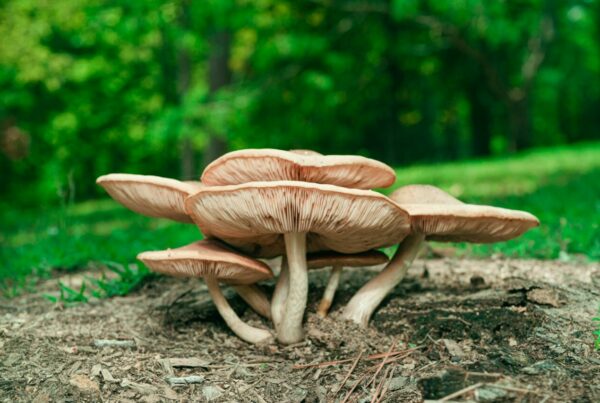Deciphering Mycelium
Mycelium, being the root structure of fungi, primarily acts as the digestive system for mushrooms. Its primary role is to seek out and process nutrients into a form that the fungus can absorb, thereby nourishing the fungus. The resulting byproduct of this process enriches the surrounding soil by supplying essential nutrients to other plants and creates a nutrient-rich biomass that is highly beneficial as mulch for gardening.
Beyond their essential role in mushroom growth, mycelial networks are integral to the health and growth of many land plants, including trees. For example, tree roots maintain a symbiotic relationship with fungi: the tree offers the fungus carbon in the form of sugars, and in return, the fungus provides the tree with key minerals like nitrogen and phosphorus. You can learn more about this symbiotic interaction here.
Fascinatingly, mycelium networks function as an underground communication system among plants, akin to the neural networks in our brains. Recent scientific studies suggest that plants and trees might have rudimentary nervous systems that fungi could potentially influence, affecting processes such as communication, memory, and learning. Moreover, mycelium improves soil health by breaking down decaying organic matter and neutralizing any pollutants present.
If you’re curious about growing magic mushrooms, a fundamental understanding of mycelium development is necessary. While the cultivation process may seem daunting for beginners, acquiring knowledge about mycelium is a critical first step. While you can always opt to buy mushrooms from Buy Shrooms Canada online, learning about mycelium can greatly enrich your cultivation journey.
Mycelium Growth Cycle
Upon encountering a suitable growth environment, fungal spores begin to develop two kinds of mycelium. The first, referred to as primary or monokaryotic mycelium, is characterized by each cell having a single nucleus and is typically invisible to the naked eye. The second type, termed as secondary or dikaryotic mycelium, is visible and features two nuclei within each cell.
When fungal spores germinate, they initiate the formation of a primary mycelium known as the monokaryotic mycelium. If this primary mycelium encounters another compatible monokaryotic mycelium, they can fuse together, creating a secondary stage known as the dikaryotic mycelium. It’s this secondary mycelium that has the ability to produce structures like mushrooms or sclerotia.
Mycelium Types
There are three types of mycelia, with two of them being signs of successful cultivation.
- Rhizomorphic mycelia, identifiable by their string-like extensions, consist of units called hyphae. These hyphae form a network known as rhizomorphs. To locate suitable areas for nutrient acquisition, the rhizomorphic mycelia initially spread out and then send chemical signals back to the colony. The remaining mycelia follow these signals. Peroxidase, a substance that breaks down nearby material for nourishment, is released by the hyphae at the tip of the rhizomorphic mycelia. This allows the hyphae to cover the material and distribute the nutrients throughout the colony. Cultivators often prefer rhizomorphic mycelia because of their propensity to produce mushrooms from the substrate.
- Tomentose, or fluffy mycelia, bear many resemblances to rhizomorphic mycelia, but they have a unique strand arrangement. These strands may not be instantly visible, but they exist and are grouped together, giving a cotton-ball-like appearance. The type of mycelia—whether tomentose or rhizomorphic—largely depends on the growing conditions. Cultivators continue to debate whether the type of mycelia affects the growth rate or yield.
- Aerial mycelia manifest when the growing conditions are less than ideal. Under such circumstances, the mycelia tend to grow outwards instead of spreading across the medium or forming a ball. Often mistaken for bacterial contamination, this type of mycelia can impede your mushroom cultivation, leading to smaller, weaker mushrooms. Aerial mycelia usually result from inadequate fresh air exchange or excessive humidity.
Is it Mould or Mycelium?
It’s crucial to be able to tell the difference between mould and mycelium. If there are green, blue, grey, or black patches visible on or inside your fruiting box, it’s likely that your culture is contaminated. Discolouration serves as the primary clue. However, blue spots might not always indicate a problem and could simply be bruises.
Cobweb moulds are usually quite conspicuous. Instead of the bright The Mycelium is typically characterized by a greyish white color and a fluffy, string-like texture. Although cobweb and green moulds do not pose a threat to human health, they can adversely impact the health of your mushrooms.
Buy Shrooms Canada: Your Premier Destination for Mushroom Knowledge
When you think about psychedelic mushrooms in Canada, let Buy Shrooms Canada be your first thought. We are dedicated to offering useful information that ensures you have a safe and enjoyable journey with mushrooms.





